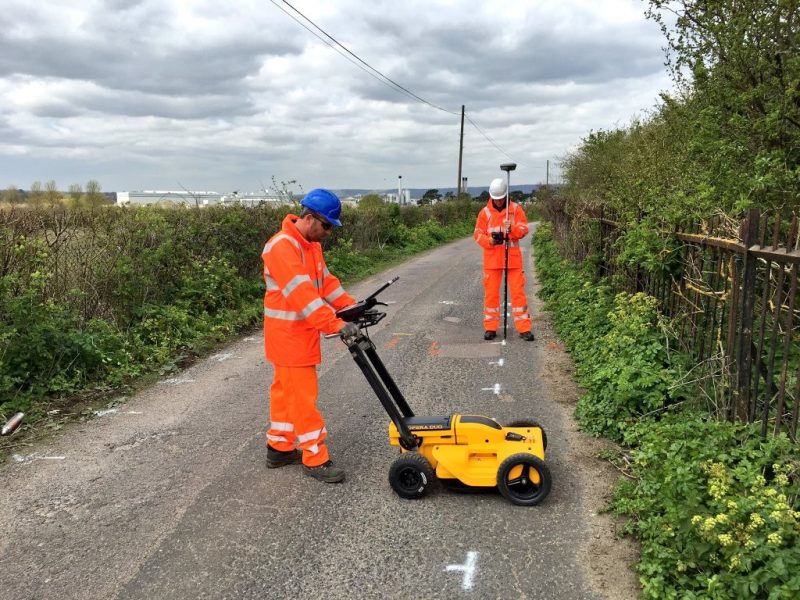Navigating the Concealed: A Dive into GPR
GPR is a robust non-destructive method utilized to investigate what lies beneath the surface without the requirement for invasive drilling or excavation. This cutting-edge technology employs radar pulses to image the subsurface, enabling for a detailed examination of geological structures, utilities, and even archaeological artifacts. As the need for precise subsurface information keeps to grow, GPR surveys have become crucial tools across various industries, from construction and engineering to environmental studies.
Understanding GPR and its applications is vital for professionals tasked with designing and executing projects that depend on accurate underground data. Whether you are an engineer determining ground conditions, a contractor assessing site feasibility, or a landowner curious about subsurface features, this article will walk you through the fundamental aspects of GPR surveys. We will investigate how this technology works, the advantages it offers, and its wide-ranging applications, providing you with the insight to leverage GPR effectively in your next project.
Grasping Ground Penetrating Radar (GPR) Tech
GPR is a nonintrusive geophysical method that employs EM waves to visualize and investigate the below-ground structure. The system functions by emitting quick pulses of radio waves into the earth. When these signals hit various materials, such as soil, rock, or embedded utilities, they reflect back to the surface. By analyzing these reflections, GPR can create detailed graphs of subsurface characteristics, making it an essential instrument for a variety of uses.
The gear used in GPR inspections typically consists of a transmitter and receiver antenna, which can change in frequency. Lower bands go deeper into deeper but provide reduced detail, while higher-range frequencies offer superior resolution but shallower depth. This versatility allows users to pick the suitable settings based on the specific requirements of the inspection, whether it's locating utilities, assessing geological features, or exploring archaeological locations. https://landsurveysworcestershire.co.uk/best-gpr-survey-worcestershire/ collected from GPR inspections is usually displayed in real-time, providing instant insights into the subsurface characteristics.
GPR technology is evolving with enhancements in programs and processing techniques that refine understanding of the data. Advancements such as three-dimensional mapping and integration with Geographic Information Systems (GIS) enable more detailed analysis and visualization of underground features. As grasp of GPR methods expands, its applications expand, making it a key element in contemporary infrastructure projects, ecological assessments, and historical research.

Perks and Impacts of GPR Surveys
Ground Penetrating Radar investigations offer countless perks, especially in their capability to provide non-intrusive subsurface visualization. This technology can rapidly identify and map out subsurface services, empty spaces, and earth characteristics without the need for extensive excavation. By using EM signals, GPR can produce detailed pictures of different substances and forms beneath the surface, minimizing disruption on building sites and enhancing safety for workers.
The uses of GPR surveys are wide-ranging and varied, covering fields such as building, archaeology, and ecological science. In building and infrastructure projects, GPR helps identify the position of utilities and structural issues before digging starts, reducing the risk of harm and related costs. In historical research, GPR can reveal hidden relics and buildings, facilitating careful digging processes that preserve historical locations. Additionally, it has a crucial role in environmental and ground investigations, helping experts assess earth composition and detect contamination.
Moreover, GPR investigations greatly contribute to facility inspections by enabling routine monitoring of highways, bridges, and other critical infrastructure. They assist in finding subsurface anomalies that could lead to structural failures, thus facilitating timely repairs. By offering a swift and affordable way to assess subsurface conditions, GPR investigations are turning into an indispensable tool in contemporary industry, driving efficiency and improved decision-making in infrastructure development and oversight.
Ground Penetrating Radar Surveys in Engineering and Construction
GPR assessments are emerging as an essential tool in the realm of construction and engineering. By utilizing GPR technology, engineers can quickly and non-invasively detect the presence of subsurface utilities, geological irregularities, and possible dangers. This data is vital for planning construction activities, maintaining safety, and reducing risks associated with unforeseen underground conditions. With timely identification of these elements, project timelines can be maintained, minimizing delays and unforeseen expenses.
In infrastructure development, GPR assessments support engineers in evaluating the structural integrity of existing components and foundations. By detecting voids, cracks, or other anomalies within concrete and below-surface layers, GPR provides insights that are vital for making informed decisions regarding repairs or strengthening. This forward-thinking method not only protects construction quality but also improves the durability of structures.
Additionally, GPR surveys contribute substantially to compliance with regulations and environmental evaluations. By mapping underground situations accurately, construction teams adhere to safety regulations and environmental guidelines, reducing the effects on surrounding ecosystems. As the construction industry adopts innovative technologies, GPR stands out as a trusted method that enhances project efficiency and sustainability, ultimately leading to more secure and more robust infrastructures.